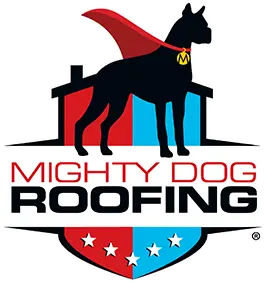Installing a new roof is a major home project, whether it's a replacement or a first-time installation. Proper preparation ensures a smooth process, minimizes disruptions and helps avoid unexpected issues.
Breaking the project into steps—choosing materials, hiring experienced contractors, and planning—can make the process more manageable. With careful preparation, you’ll achieve a durable, long-lasting roof that enhances your home’s protection and appearance.
Roof Installation Preparation
Before the roofing crew arrives, taking key steps can streamline the process and minimize disruptions.
Clear the Work Area
Move vehicles, outdoor furniture, and other items away from your home to provide contractors with space to work safely and efficiently. Clearing the area also helps prevent accidental damage and improves site safety.
Protect Your Belongings
Roof work can create dust and debris. Cover attic and top-floor items with plastic sheeting, and remove fragile decorations from walls to prevent damage from vibrations. If possible, relocate pets or small children to avoid stress and ensure safety.
Inform Your Neighbors
Let your neighbors know about the upcoming installation, as the noise and increased activity may affect them. Providing an estimated timeline and discussing parking or access needs can help maintain good relations.
Selecting the Right Roofing Materials
Consider Your Climate
Your local climate plays a crucial role in choosing the right roofing material. In areas with heavy rain or snow, opt for durable, water-resistant materials. For hotter climates, reflective materials can help reduce heat absorption and lower cooling costs. Consult your contractor to ensure your choice suits local weather conditions for long-term performance.
Explore Material Options
Different roofing materials offer unique benefits. Asphalt shingles are affordable and easy to install, while metal roofing provides durability and energy efficiency. Clay tiles, slate, and wood shakes offer distinct aesthetics and performance features.
Weigh factors like lifespan, maintenance, and cost to find the best fit for your home and budget. A well-informed decision ensures lasting value and protection.
During the Roof Installation
Communication with Contractors
Maintain open communication with your roofing contractors throughout the installation process. Address any concerns or questions, and ask for regular updates on the project's progress. Keeping the lines of communication open ensures that any issues can be addressed promptly, preventing potential delays or misunderstandings.
Establish a primary point of contact within the contractor's team to streamline communication. This person can provide consistent updates and act as a liaison between you and the rest of the crew. Effective communication builds trust and fosters a collaborative environment, contributing to a successful roofing project.
Safety Precautions
Ensure that the contractors adhere to safety protocols during the installation. This includes wearing appropriate safety gear and following industry standards to protect the workers and your property. Discuss any specific safety concerns you may have and ensure the contractor has a comprehensive safety plan.
Monitor the Progress
While it's important to trust your contractors, keeping an eye on the work as it progresses can help ensure that it meets your expectations. Don't hesitate to speak up if something doesn't seem right or if you have questions about the process. Being proactive in monitoring the project allows for timely adjustments and ensures that the final result aligns with your vision.
Regular site visits can provide you with firsthand insights into the progress and quality of the work. Documenting the installation process with photos or notes can serve as a valuable reference for future maintenance or warranty claims. Your involvement demonstrates a vested interest in the success of the project and can lead to a more satisfactory outcome.
Post-Installation Steps
Inspect the Work
Once the roof installation is complete, conduct a thorough inspection of the work. Check for any visible issues, such as misaligned shingles or incomplete flashing. A professional inspection by a third party can also provide peace of mind, making sure the installation meets industry standards and your expectations.
Invite your contractor to join you in the inspection, allowing them to address any concerns immediately. Document any issues or defects with photos and notes, and discuss them with your contractor to determine the appropriate course of action. A comprehensive inspection will find any potential problems that need to be resolved before finalizing the project.
Clean Up
Reputable roofing companies will clean your property after the installation. However, do a walkthrough to confirm that all debris has been removed and that your home and yard are in good condition. A tidy worksite reflects the professionalism of the contractor and sets the stage for a positive post-installation experience.
Inspect areas such as gutters and downspouts for any leftover debris that could impede their function. Verify that all tools and materials have been removed and that no damage has occurred to your landscaping or property. A thorough cleanup ensures that your home is ready to enjoy without any lingering issues from the installation.
Understand Your Warranty
Discuss the warranty details with your contractor. Understand what is covered, the duration of the warranty, and any maintenance requirements to keep it valid. A solid warranty can provide added protection for your investment, offering peace of mind in the event of future issues.
Ensure you receive all warranty documentation in writing, including the terms and conditions. Familiarize yourself with any obligations you have as a homeowner to maintain the warranty, such as regular inspections or maintenance tasks. Understanding your warranty empowers you to protect your investment and maximize the lifespan of your new roof.
Long-Term Roof Maintenance
A new roof is a major investment, and regular upkeep helps extend its lifespan while preventing costly roof repairs or replacements. Taking proactive steps will keep your roof in top condition and protect your home.
Regular Inspections
Schedule routine roof inspections to catch minor issues before they become major problems. Look for cracked or missing shingles and address them promptly. Professional inspections can uncover hidden damage that may not be visible to the untrained eye. Keeping a maintenance log helps track repairs and ensures your roof remains in optimal shape.
Gutter Maintenance
Clogged gutters can lead to water buildup, leaks, and even structural damage. Regularly clean gutters to keep water flowing properly and inspect for signs of rust, sagging, or wear. Installing gutter guards can help minimize debris buildup and reduce the frequency of cleanings, keeping your roofing system in better condition.
Trim Overhanging Branches
Nearby trees can pose a risk to your roof, especially during storms. Trim overhanging branches to prevent potential damage and reduce the accumulation of leaves and debris. Regularly assess tree proximity, and if necessary, consult an arborist to ensure proper and safe trimming. Keeping trees at a safe distance helps maintain your roof’s integrity and longevity.
Conclusion
A successful roof installation starts with thorough preparation, from clearing your property to selecting the right materials and maintaining open communication with your contractor. Taking these essential steps ensures a smoother process, minimizes disruptions, and helps you achieve a durable, high-quality roof.
Once installed, proactive maintenance—such as routine inspections, gutter cleaning, and trimming overhanging branches—will help extend your roof’s lifespan and protect your home. Investing time in preparation and upkeep ensures that your new roof provides lasting protection, efficiency, and value for years to come.
For expert roof installation services in Fort Myers, trust the professionals at Mighty Dog Roofing to get the job done right.


